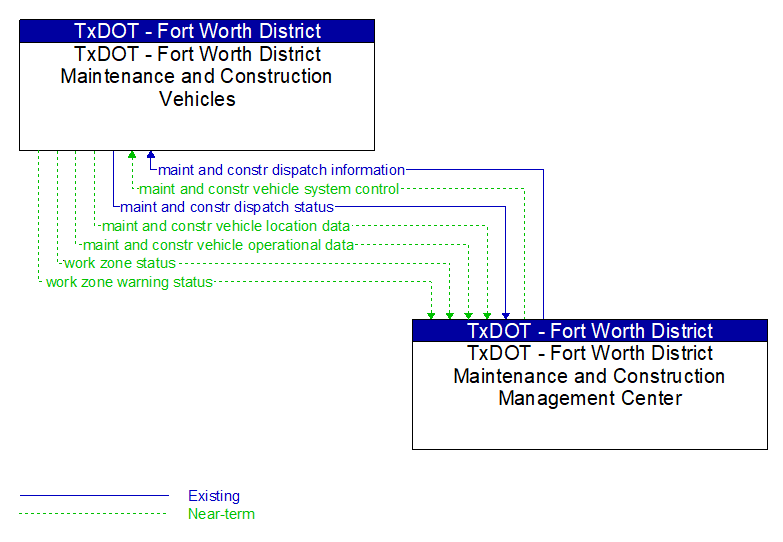Interface: TxDOT - Fort Worth District Maintenance and Construction Vehicles - TxDOT - Fort Worth District Maintenance and Construction Management Center

Information Flow Definitions
maint and constr dispatch information (Existing)
Information used to dispatch maintenance and construction vehicles, equipment, and crews and information used to keep work zone crews informed. This information includes routing information, traffic information, road restrictions, incident information, environmental information, decision support information, maintenance schedule data, dispatch instructions, personnel assignments, alert notifications, and corrective actions.
maint and constr dispatch status (Existing)
Current maintenance and construction status including work data, operator status, crew status, and equipment status.
maint and constr vehicle location data (Near-term)
The current location and related status (e.g., direction and speed) of the maintenance/construction vehicle.
maint and constr vehicle operational data (Near-term)
Data that describes the maintenance and construction activity performed by the vehicle. Operational data includes materials usage (amount stored and current application rate), operational state of the maintenance equipment (e.g., blade up/down, spreader pattern), vehicle safety status, and other measures associated with the operation of a maintenance, construction, or other special purpose vehicle. Operational data may include basic operational status of the vehicle equipment or a more precise record of the work performed (e.g., application of crack sealant with precise locations and application characteristics).
maint and constr vehicle system control (Near-term)
Configure and control data that supports remote control of on–board maintenance and construction vehicle systems and field equipment that is remotely controlled by the vehicle. For example, the data can be used to adjust material application rates and spread patterns.
work zone status (Near-term)
Current work zone status including current location (and future locations for moving work zones), impact to the roadway, required lane shifts, expected time(s) and duration of impact, anticipated delays, alternate routes, and suggested speed limits.
work zone warning status (Near-term)
Status of a work zone safety monitoring and warning devices. This flow documents system activations and includes additional supporting information (e.g., an image) that allows verification of the alarm.